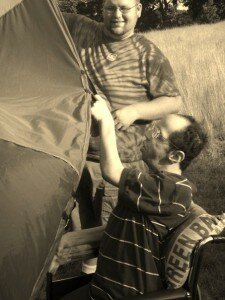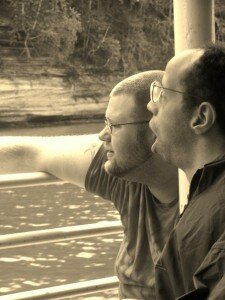National Family Volunteer Day is this Saturday, November 19. Family Volunteer Day is a great time to get your family involved in community service. How exactly can your family volunteer as one unit? Our friends at GenerationOn have excellent ideas to get you started this weekend!
So what exactly is this National Family Volunteer Day all about? National Family Volunteer Day was created to mobilize family members young and old within their community. Volunteering together brings family members together for a united cause. Family members can learn more about each other’s passions and interests through volunteering on a project together.
GenerationOn has great topics to get your family involved in various causes.
Volunteering as a family fosters ideas of service within younger family members while empowering older members at the same time.
Follow these tips and show your family that they really can make a difference in their community at any level!
Animal care: Help pets in your local area find loving homes by calling your local shelter or humane society for their volunteering requirements. Raise money for your local guide dog organization. Clean up your local dog park to provide a fun and sanitary environment for your furry friends.
Emergency preparedness: Raise money for those affected by a natural disaster or organization that works with natural disaster victims and clean up. Put together emergency kits for those in need. Organize a supplies drive for areas affected by natural disasters.
Environment: Make and distribute posters in your local community about the importance of being green. Get your family to choose environmentally friendly reusable bags for groceries as opposed to using plastic bags. Host a green thumb party where your family can plant a garden in your neighborhood, school, or retirement home.
Health and Wellness: Visit your local hospital or retirement home to spread holiday cheer to those who need it.
Homelessness: Donate winter clothes and blankets to your local shelter. Contact your local soup kitchen to learn more about how your family can volunteer.
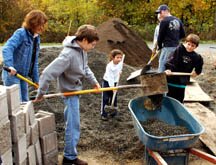 Hunger: Help out at your local food bank by stocking shelves, collecting donations, and serving those who may be in need. Pack lunches for your local homeless shelter, soup kitchen, or food bank so that they may be distributed to other community members.
Hunger: Help out at your local food bank by stocking shelves, collecting donations, and serving those who may be in need. Pack lunches for your local homeless shelter, soup kitchen, or food bank so that they may be distributed to other community members.
Literacy: Read to hospitalized children who may be feeling down. Help out with after school tutoring programs. If you are bilingual, help out with a language class.
Military: Send thank you cards to military veterans or active servicemen, put together holiday care packages for those who are still serving overseas, or put flowers on a war memorial close to you. Teaching your children about the military will not only inspire them, but it will also help them feel more tied to the community.
Seniors: Make holiday ornaments for senior homes in your community, spread holiday cheer by singing holiday carols, or send holiday cards to seniors in your area who may not have family to celebrate with.
There are many ways to get your family involved in your community through volunteering. Family volunteer day is an excellent way to begin teaching service to your children through all types of projects. Visit GenerationOn’s website to find more toolkits that will get your started this holiday season. Happy volunteering and share your ideas below!

 Several factors make a big difference in whether an agency’s efforts in service learning are effective.
Several factors make a big difference in whether an agency’s efforts in service learning are effective. Today’s post comes from Amy Smith, President of
Today’s post comes from Amy Smith, President of  That’s why I am so excited that Starbucks has created their global month of service with the specific goal of engaging their partners (employees) and customers in meaningful service opportunities. Starbucks expects more than 2,000 community service projects, led by their partners, to be organized as part of the global month of service. That’s an ambitious, but achievable goal of 200,000 hours of service performed globally throughout the month of April. This initiative will offer the company’s nearly 200,000 partners and more than 50 million customers each week in April new opportunities to participate in meaningful community service projects. I’m thrilled that we can offer the resources of HandsOn Network and its 250 local action centers to help identify and organize service activities to best meet the needs of each community.
That’s why I am so excited that Starbucks has created their global month of service with the specific goal of engaging their partners (employees) and customers in meaningful service opportunities. Starbucks expects more than 2,000 community service projects, led by their partners, to be organized as part of the global month of service. That’s an ambitious, but achievable goal of 200,000 hours of service performed globally throughout the month of April. This initiative will offer the company’s nearly 200,000 partners and more than 50 million customers each week in April new opportunities to participate in meaningful community service projects. I’m thrilled that we can offer the resources of HandsOn Network and its 250 local action centers to help identify and organize service activities to best meet the needs of each community.
 For the second stage of the Get HandsOn Challenge, we launched
For the second stage of the Get HandsOn Challenge, we launched 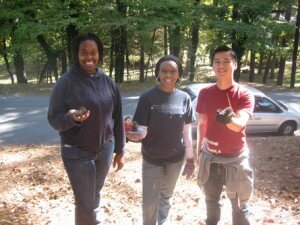 Ken serves as an AmeriCorps National Direct member through the
Ken serves as an AmeriCorps National Direct member through the  Zachary Hecht is a senior at Commack High School where he is a High Honor Role student and an IB Diploma candidate. Zach is on the regional board of BBYO’s Nassau-Suffolk Region. His interests include international relations and economics.
Zachary Hecht is a senior at Commack High School where he is a High Honor Role student and an IB Diploma candidate. Zach is on the regional board of BBYO’s Nassau-Suffolk Region. His interests include international relations and economics.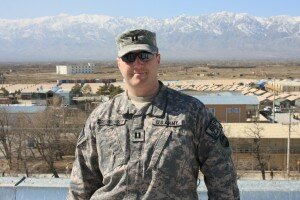 Today’s story of service is brought to you by Capt. Michael Greenberger, 5th Mobile Public Affairs Detachment
Today’s story of service is brought to you by Capt. Michael Greenberger, 5th Mobile Public Affairs Detachment


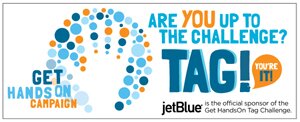
 1. Family Volunteering increases employee morale and builds a positive attitude in the workplace.
1. Family Volunteering increases employee morale and builds a positive attitude in the workplace.
 By Mills with a bit of help from Keller and Ward – an 8 year-old writes a few words about a recent clean-up day at
By Mills with a bit of help from Keller and Ward – an 8 year-old writes a few words about a recent clean-up day at 
 By Marcia Bullard
By Marcia Bullard

